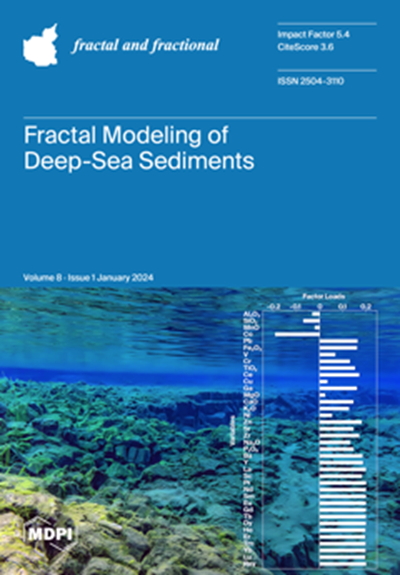Exploiting Newly Designed Fractional-Order 3D Lorenz Chaotic System and 2D Discrete Polynomial Hyper-Chaotic Map for High-Performance Multi-Image Encryption
IF 3.3
2区 数学
Q1 MATHEMATICS, INTERDISCIPLINARY APPLICATIONS
引用次数: 0
Abstract
Chaos-based image encryption has become a prominent area of research in recent years. In comparison to ordinary chaotic systems, fractional-order chaotic systems tend to have a greater number of control parameters and more complex dynamical characteristics. Thus, an increasing number of researchers are introducing fractional-order chaotic systems to enhance the security of chaos-based image encryption. However, their suggested algorithms still suffer from some security, practicality, and efficiency problems. To address these problems, we first constructed a new fractional-order 3D Lorenz chaotic system and a 2D sinusoidally constrained polynomial hyper-chaotic map (2D-SCPM). Then, we elaborately developed a multi-image encryption algorithm based on the new fractional-order 3D Lorenz chaotic system and 2D-SCPM (MIEA-FCSM). The introduction of the fractional-order 3D Lorenz chaotic system with the fourth parameter not only enables MIEA-FCSM to have a significantly large key space but also enhances its overall security. Compared with recent alternatives, the structure of 2D-SCPM is simpler and more conducive to application implementation. In our proposed MIEA-FCSM, multi-channel fusion initially reduces the number of pixels to one-sixth of the original. Next, after two rounds of plaintext-related chaotic random substitution, dynamic diffusion, and fast scrambling, the fused 2D pixel matrix is eventually encrypted into the ciphertext one. According to numerous experiments and analyses, MIEA-FCSM obtained excellent scores for key space (2541), correlation coefficients (<0.004), information entropy (7.9994), NPCR (99.6098%), and UACI (33.4659%). Significantly, MIEA-FCSM also attained an average encryption rate as high as 168.5608 Mbps. Due to the superiority of the new fractional-order chaotic system, 2D-SCPM, and targeted designs, MIEA-FCSM outperforms many recently reported leading image encryption algorithms.利用新设计的分数阶三维洛伦兹混沌系统和二维离散多项式超混沌图实现高性能多图像加密
近年来,基于混沌的图像加密已成为一个突出的研究领域。与普通混沌系统相比,分数阶混沌系统往往具有更多的控制参数和更复杂的动态特性。因此,越来越多的研究人员开始引入分数阶混沌系统来增强基于混沌的图像加密的安全性。然而,他们提出的算法仍然存在一些安全性、实用性和效率方面的问题。为了解决这些问题,我们首先构建了一个新的分数阶三维洛伦兹混沌系统和一个二维正弦约束多项式超混沌图(2D-SCPM)。然后,我们基于新的分数阶三维洛伦兹混沌系统和2D-SCPM(MIEA-FCSM)精心开发了一种多图像加密算法。引入带有第四参数的分数阶三维洛伦兹混沌系统不仅使MIEA-FCSM的密钥空间显著增大,而且增强了其整体安全性。与最近的替代方案相比,2D-SCPM的结构更简单,更有利于应用实现。在我们提出的 MIEA-FCSM 中,多通道融合首先将像素数量减少到原来的六分之一。然后,经过两轮与明文相关的混沌随机置换、动态扩散和快速加扰,最终将融合后的二维像素矩阵加密为密文矩阵。根据大量实验和分析,MIEA-FCSM 在密钥空间(2541)、相关系数(<0.004)、信息熵(7.9994)、NPCR(99.6098%)和 UACI(33.4659%)等方面都获得了优异的成绩。值得注意的是,MIEA-FCSM 的平均加密速率也高达 168.5608 Mbps。由于新的分数阶混沌系统、二维SCPM和针对性设计的优越性,MIEA-FCSM的性能超过了最近报道的许多领先的图像加密算法。
本文章由计算机程序翻译,如有差异,请以英文原文为准。
求助全文
约1分钟内获得全文
求助全文
来源期刊

Fractal and Fractional
MATHEMATICS, INTERDISCIPLINARY APPLICATIONS-
CiteScore
4.60
自引率
18.50%
发文量
632
审稿时长
11 weeks
期刊介绍:
Fractal and Fractional is an international, scientific, peer-reviewed, open access journal that focuses on the study of fractals and fractional calculus, as well as their applications across various fields of science and engineering. It is published monthly online by MDPI and offers a cutting-edge platform for research papers, reviews, and short notes in this specialized area. The journal, identified by ISSN 2504-3110, encourages scientists to submit their experimental and theoretical findings in great detail, with no limits on the length of manuscripts to ensure reproducibility. A key objective is to facilitate the publication of detailed research, including experimental procedures and calculations. "Fractal and Fractional" also stands out for its unique offerings: it warmly welcomes manuscripts related to research proposals and innovative ideas, and allows for the deposition of electronic files containing detailed calculations and experimental protocols as supplementary material.
 求助内容:
求助内容: 应助结果提醒方式:
应助结果提醒方式:


